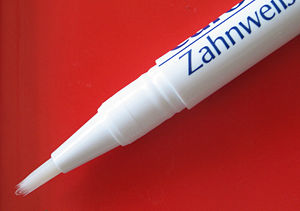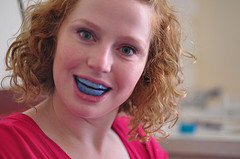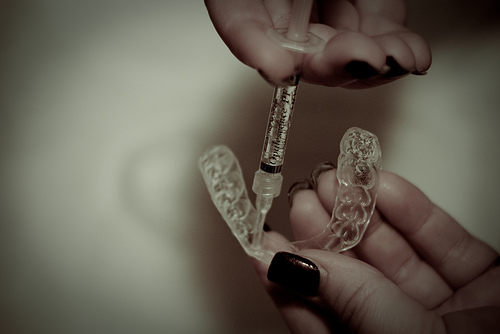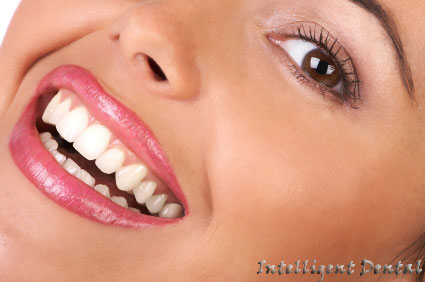As in-office bleaching or professional tooth whitening costs increase, many people are turning to cheaper and more affordable alternatives to achieve a whiter smile. Though in-office tooth whitening have a higher success rate, many people swear by home tooth whitening and claim that it is just as effective in removing yellow stains.
Why choose home tooth whitening systems?
The main difference between home tooth whitening systems and professional tooth whitening besides the cost is the concentration of bleaching ingredient or tooth whitening product. In-office tooth whitening which are prescribed only by dentists such as the Zoom teeth whitening system generally have a higher concentration hence the more effective and results are attained quicker. Home tooth whitening products generally contain very low levels of bleach and in some cases the content might be negligible. Hence it is important for those who want to opt for home tooth whitening kits to look around for the best and most effect method or product to avoid wasting money unnecessarily.
Types of home tooth whitening systems
Home tooth whitening comprise a range of method from over the counter tooth whitening kits which are widely available from departmental stores to natural or organic home tooth whitening remedies. Over the counter home tooth whitening systems have been very popular and come in various forms of brush-on whitening paints, whitening strips and self applied whitening gels on commercial trays.

Tooth whitening paints
Brush-on home tooth whitening paints or kits come with a bottle of tooth whitening product with an attached brush that can be used to paint the tooth whitening material on your teeth. The product is allowed to dry on teeth and left overnight to work. This method is usually rather ineffective as it relies on how long and how well the tooth whitening ingredient stays on tooth surfaces. Due to the lack of barrier between the tooth whitening product and the oral cavity, contamination from saliva is definite and this reduces the effectiveness of brush-on tooth whitening paint due to material dissolution.

Tooth whitening strips
Home tooth whitening strips are special adhesive strips with embedded tooth whitening or bleaching material. These whitening strips are designed so that each strip can be used to fit all upper or lower front teeth at once. Whitening strips are rather convenient as it can be used whenever and is left for up to 30 minutes on teeth surfaces to allow time for bleaching material to work. Unfortunately, these tooth whitening strips do not work too well because it relies on penetration of material from the strip to teeth and this requires contact between the strip itself to teeth. The whitening strips are made flat and minimal molding can be done around teeth, leaving the interproximal areas or contacting surfaces between teeth unaffected. This can lead to uneven bleaching and may aggravate the problem especially if staining or discolorations in between teeth are severe, causing the appearance to resemble presence of small gaps in between teeth.

Self applied tooth whitening gel
Self applied whitening gels at home on commercial whitening trays are by far the most effective as its mechanism closely resembles those of a professional tooth whitening kit. Tooth whitening gel product is dispensed on the tray which is then fitted around the upper or lower teeth. This optimizes contact between teeth and bleaching material whilst minimizing contamination and dissolution from saliva. The product being in gel form allows greater retention on tooth surfaces and also greater penetration to small crevices and interproximal areas in between teeth. Most commercial whitening trays come in fixed sizes but these may not fit your teeth well. It is crucial to select a tray that fits snugly around your teeth to prevent gaps that allow leakage of material into saliva from the mouth and vice versa. Some tooth whitening kits have moldable trays which can be softened with hot water and then molded around your teeth to ensure snug fit before it hardens. These trays allow for better precision although it can be a bit more expensive. This lays the stark difference between commercial whitening trays and professional tooth whitening trays as in-office administered trays are custom made according to your teeth only and fits precisely around your teeth and does not cover the gum area. Exclusion of gum coverage can be crucial in some susceptible individuals to prevent gum problems where the bleaching product or long periods of gum contact with tray material can compromise health of gums.
Natural home remedies to whiten teeth such as strawberries and baking soda have been used with claims that it works just the same as commercial tooth whitening products. Though it is the cheapest tooth whitening method, these claims should be taken with a pinch of salt and if followed, should be done cautiously at own risk.

Pingback: Zoom Teeth Whitening System | Intelligent Dental
Pingback: Causes of yellow teeth | Intelligent Dental
Pingback: Tweets that mention Your guide to home tooth whitening | Intelligent Dental -- Topsy.com
There are many sites on baking soda teeth whitening but I have found your wp site highly informative and interesting reading. I have made a note of your site and was wondering if there any other sites that can provide the same quality of information on baking soda teeth whitening?
There are many sites on home remedy teeth whitening but I have found your wp site highly informative and interesting reading. I have made a note of your site and was wondering if there any other sites that can provide the same quality of information on home remedy teeth whitening?